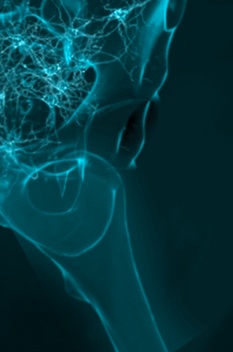Introduction
Peripheral nerve tumors can occur anywhere in the body. Most of them aren't cancerous ...
Back to a worry-free everyday life
Millions of people worldwide are affected by an irritable bladder. No matter how severe the symptoms are, the limitations they bring with them in everyday life are always most unpleasant. If the usual treatments do not deliver the desired results, nerve stimulation can bring about a significant improvement. The main objectives of the therapy are to control the activity of the bladder muscle and urinary incontinence. This innovative treatment method stimulates the pudendal nerve or one of its branches.
GNS therapy
In treating an irritable bladder or an overactive bladder, we achieve the best results with GNS therapy (genital nerve stimulation). By this innovative method, the pudendal nerve or one of its branches, the urethral branch, is stimulated with electrical impulses. The pudendal nerve is a genital nerve in the pelvic area that is primarily responsible for controlling the bladder, rectum and sphincters.
While other therapeutic methods have side effects, such as impairment of bladder emptying function, electrical nerve stimulation does not interfere with bladder emptying, it can even improve it.
GNS therapy is based on stimulation of the genital nerve, while the PN-Stim-LION method focuses on stimulation of the pudendal nerve. In both cases, an electrode cable and a pacemaker of less than 2 cm in size are placed on the nerves in order to stimulate them electrically. The tiny device is implanted into the pelvic cavity, which prevents the electrode from moving. Harmless and painless electrical impulses are emitted via a thin wire. This stimulation causes a contraction of the urethral sphincter, a relaxation of the bladder muscles, an improvement in bladder control and thus a better emptying of the bladder.
Stimulation of the pudendal nerve
Implantation of the microstimulator system on the pudendal nerve (nervus pudendus) requires considerable experience in laparoscopic pelvic surgery.
The laparoscopic approach to the examination of the pelvis enables the gynaecologist to analyze the possible causes. Endometriosis of the bladder, adhesions from the intestine to the bladder and compression or irritation of the pelvic nerves are potential causes of an overactive bladder that can be treated by laparoscopy. After the examination, a reliable decision can be made as to whether implantation and nerve stimulation or other symptomatic treatment should be performed.
The laparoscopic procedure takes less than 30 minutes and can be performed on an outpatient basis. After the laparoscopic implantation of the cable to the pudendal nerve, the patient goes through a test phase of several weeks with an external stimulator before deciding for or against the insertion of a permanent pacemaker under local anesthesia. The stimulation modulates the nerves with weak electrical impulses and the patient controls the duration and intensity of the stimulation using a remote control.
Treatment of the irritable bladder by stimulation of the genital nerves
If there is no identifiable cause for the irritable bladder, stimulation of the genital nerves is the appropriate therapy. A microstimulator system (pacemaker) a few centimetres in size is placed on the genital nerves by laparoscopy through a small incision under the pubic hair behind the pubic bone. The stimulation of the genital nerve is controlled by the patient himself via a remote control, which reduces the overactivity of the bladder and at the same time improves the control of urinary incontinence.
This procedure takes less than 30 minutes and can be performed by a gynaecologist or urologist on an outpatient basis under local anesthesia. In addition to the positive effect on bladder function, stimulation of the genital nerves also improves sexual satisfaction and penis erection. Both procedures are reversible and can be interrupted at any time by switching off or removing the device.
GNS therapy is also a good treatment option if the irritable bladder occurs in combination with urinary incontinence. Nerve stimulation can alleviate or completely eliminate the symptoms.
To help people in difficult situations to improve their quality of life has become his life's passion. Continuous research, decades of clinical experience and the focused determination to find a solution for previously unsolved medical problems, have enabled Prof. Possover to help often quite discouraged patients find release from their seemingly insurmountable problems.
Our team will take care of you
We will dedicate our expertise and know-how to help you find the solution that is right for you.
„As a cheerful, open and communicative person, I really appreciate coming into contact with people from all over the world. The well-being of others is very important to me.“

Neuropelveology is a medical discipline developed by Prof. Possover. It is based on the discovery of the pelvic nerves and includes the diagnosis of the diseases of these nerves by means of gynaecological examination methods and their treatment by means of laparoscopy.
Read morePeripheral nerve tumors can occur anywhere in the body. Most of them aren't cancerous ...
Vulvodynia is a chronic pain syndrome affecting respectively the vulva and occurs ...
Klausstrasse 4
CH - 8008 Zürich
Switzerland
E-Mail: mail@possover.com
Tel.: +41 44 520 36 00